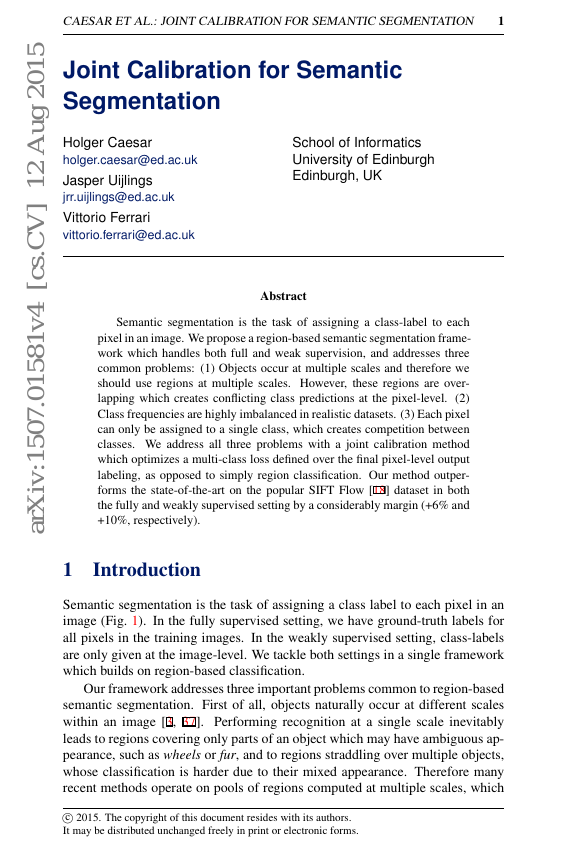Command Palette
Search for a command to run...
Holger Caesar; Jasper Uijlings; Vittorio Ferrari

Abstract
Semantic segmentation is the task of assigning a class-label to each pixel in an image. We propose a region-based semantic segmentation framework which handles both full and weak supervision, and addresses three common problems: (1) Objects occur at multiple scales and therefore we should use regions at multiple scales. However, these regions are overlapping which creates conflicting class predictions at the pixel-level. (2) Class frequencies are highly imbalanced in realistic datasets. (3) Each pixel can only be assigned to a single class, which creates competition between classes. We address all three problems with a joint calibration method which optimizes a multi-class loss defined over the final pixel-level output labeling, as opposed to simply region classification. Our method outperforms the state-of-the-art on the popular SIFT Flow [18] dataset in both the fully and weakly supervised setting by a considerably margin (+6% and +10%, respectively).
Benchmarks
| Benchmark | Methodology | Metrics |
|---|---|---|
| semantic-segmentation-on-sift-flow | JCSS | Mean Accuracy: 59.2 |
| semantic-segmentation-on-sift-flow | JCSS (weakly supervised) | Mean Accuracy: 44.8 |
Build AI with AI
From idea to launch — accelerate your AI development with free AI co-coding, out-of-the-box environment and best price of GPUs.